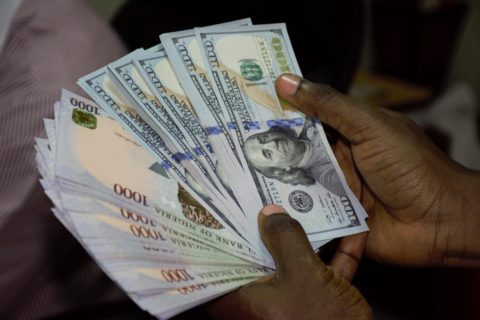
The naira slipped to an all-time low of N1681 per dollar at the official Investor and Exporter (I&E) window on Tuesday, November 6, 2024, according to data from the FMDQ Exchange.
This drop in value highlights the persistent pressures on Nigeria’s foreign exchange market and represents a new low point for the currency.
Tuesday’s rate decline follows Monday’s closing price of N1676.9/$1, which had already set a yearly high, reflecting the naira’s accelerated depreciation against the dollar in recent months.
Closing Exchange Rate: The naira closed at N1681/$1 on Tuesday, compared to Monday’s rate of N1676.9/$1.
Market Turnover: Turnover on Tuesday stood at $196.7 million, down from $218 million on Monday. So far in November, the average turnover is $147 million per day, down from October’s $245 million.
Parallel Market Rate: The parallel market rate hovered around N1735/$1, reflecting a significant gap between the official and unofficial exchange rates.
External Reserves: According to the Central Bank of Nigeria (CBN), external reserves currently stand at $39.9 billion. While reserves have shown stability, they have not prevented the naira from declining to record lows in the face of high demand pressures.
The naira’s depreciation coincides with the U.S. presidential election, in which former President Donald Trump defeated Vice President Kamala Harris to reclaim office. Trump’s expected economic policies may bring mixed impacts for Nigeria’s economy:
Energy Prices: Trump has historically supported lower global energy prices, a factor that could reduce Nigeria’s oil revenues. Any downward pressure on crude oil prices could lower Nigeria’s dollar inflows, exacerbating the demand-supply gap in the forex market.
Interest Rates: Trump’s preference for lower interest rates could, however, work in Nigeria’s favour. If lower rates boost global liquidity, it may lead to increased forex inflows from international investors seeking higher returns, potentially stabilizing the naira if inflows strengthen.
Nigeria’s currency has depreciated by roughly 45% this year, one of the most significant drops worldwide.
November’s exchange rate movements are a continuation of the pressure the naira has faced throughout the year, with demand outpacing supply.
This trend is likely to persist unless there is a notable improvement in dollar inflows or a decline in demand pressures.
The widening gap between official and unofficial rates has added pressure on the Central Bank to manage liquidity in the forex market.
Efforts by the central bank at managing the forex decline have been supported by growth in diaspora remittances which rose to $600 million monthly.
This is however yet to reflect on the exchange rate as other factors continue to weigh down on the currency markets.
For example, Nigeria continues to grapple with high fiscal deficits amidst falling capital importation.
Controversy surrounding the Dangote Refinery is also a challenge as marketers vow to continue importing piling pressure on the naira.






